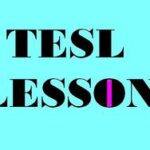Building both receptive and expressive language skills for preschool age children seems most often natural and can be a lot of fun. We instinctively know that the best way to build a child’s vocabulary is to engaged and immerse them in language. However, when one is asked to teach ESL, or English as a second language, to young children, the task may seem daunting. The good news is that young children are most able and willing to learn a new language and the skills you can utilize are the same as those for teaching any young child any new skill. Those skills include at least a basic understanding of the child’s native language, enthusiasm, patience and an ability to make learning fun.
These lesson plans were requested by and designed for an ESL teacher, teaching English to Spanish speaking children in Columbia. However, because the basic principles are the same, these ideas could be used to build English language skills for English speaking children or for children of any native language who desired to learn English.
Colors, shapes and numbers are basic language skills needed for any preschooler learning any language and therefore a great place to start with an ESL lesson plan. I have chosen a caterpillar theme because all children have an affinity for nature and the dynamics of and concepts surrounding caterpillars have built in lessons for colors, shapes and numbers.
Starting with A Caterpillar Book
The Very Hungry Caterpillar by Eric Carle
A book is always a good place to start any lesson and a great book is always is a great place to start. Award winning author Eric Carle, has blessed us with the kid attractive book, The Very Hungry Caterpillar that is available in both English and Spanish as well as other languages. If possible, read this book in the students’ native language as well as the language you desire to teach before the lesson.
Preschool Lesson Plans for Creating a Caterpillar Craft
Materials needed for the ESL lesson plan for preschoolers caterpillar craft:
Colored construction paper
Scissors
Glue
Markers
Optional: craft wiggly eyes
To create a caterpillar craft, preschoolers should be allowed to cut out construction paper circles in a variety of colors. Of course, if children lack cuttings skills, these can be precut but it is always beneficial to model and allow to them to try. For beginners it may be appropriate to cut most circles but still let them try one on their own. Remember they will learn by doing and cutting their own will not only build skills but make their project uniquely their own.
The word circle, in Spanish or any native language, as well as in English should be repeated through out this process. Once the colored circles have been cut, students can glue them onto a background. Depending on time and class size restraints, kids can glue these in any order they choose and later practice identifying the colors to the teacher or group or teachers can instruct students to glue colors on in a certain order by identifying them. Either way, to make the activity valuable for learning colors, teachers should hold up circles as a visual clue and repeat the shape and color names in both Spanish, or the child’s native language, as well as English.
Kids can draw on eyes with markers or glue on wiggly eyes to complete the caterpillars. In addition to teaching colors, number words can be reinforced during and after the creation of the caterpillars. Five circles for a caterpillar is a great number for preschoolers and for toddlers, teachers can use as few as three circles and for elementary students teachers can add up to ten.
Color, shape and number words can be taught while creating this craft and reinforced by using the student projects as review models.
Variations of the Caterpillar Craft for Preschool ESL lessons:
I know that teachers often have to use what is available and that even better for students, lessons can be reinforced with a variety of mediums so I want to offer a few options that allow using different materials but still teaching the same shape, color and number concepts.
The same ESL concepts and skills could be reinforced by making caterpillar art using-
Poms poms
Play dough
Sidewalk chalk
Paints
Cookie dough and food coloring
Plastic bottle caps such as those from milk or juice jugs
Using Gross Motor Games to teach ESL Skills:
Children want and need to move so using gross motor games to teach ESL or any concept is a great idea. Once you’ve made your caterpillar craft and introduced the colors, try displaying the colors at various points in a large room or on a playground. You can now add in the vocabulary for “fast” and “slow” in explaining that “We can run fast but caterpillars are very slow.”
Once you’ve placed colors around the room or playground ask students to go to a certain color. At first say the color name in both English and Spanish or the native language and as kids master receptively identifying color names, use only English. Of course you can add to learning by later asking them to go slow or fast as they travel to a color.
Extend the Learning for ESL Lesson Plans with Preschool Games:
Once you’ve completed crafts and played games, you can extend learning and reinforce vocabulary a variety of ways.
Fill a bag with a variety of colored shapes and allow each child to pull one out? Is it is circle like the ones used to create the caterpillar? Yes or no? If not, what shape is it? What color is it?
Call students up in small groups to mimic the slow movements of caterpillars, or munching movements from the book The Very Hungry Caterpillar. Count the caterpillars as a group or have individual students identify the number of slow, hungry caterpillars!
These Preschool ESL lesson plans are one example of how books, crafts and games can be used to teach basic ESL concepts like shapes, colors and numbers. Remember that a smile communicates that “learning is fun” in any language!



